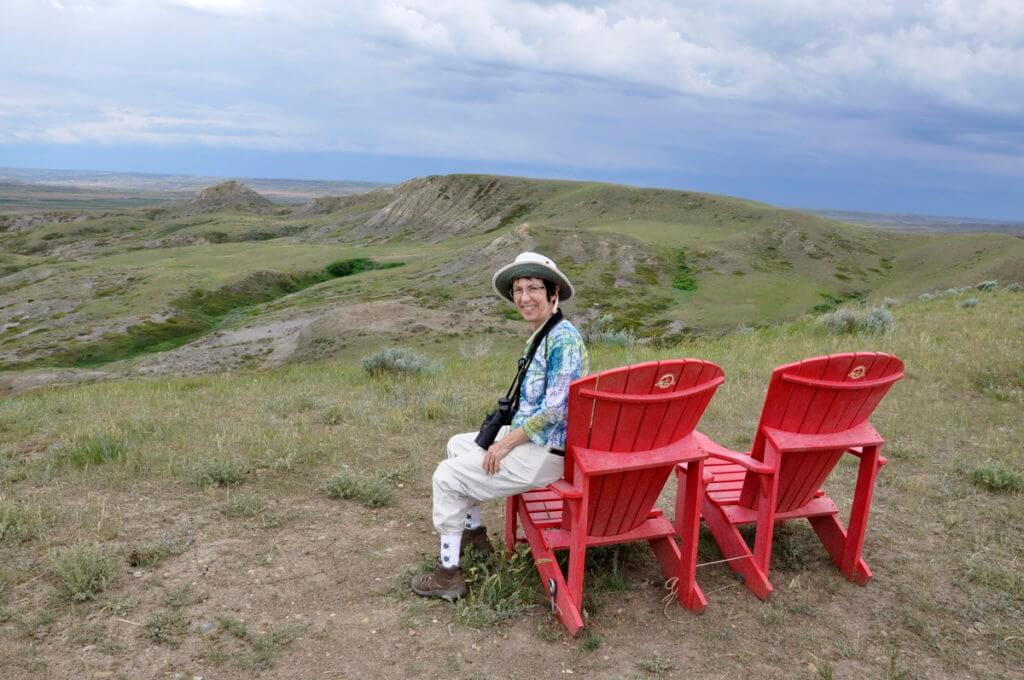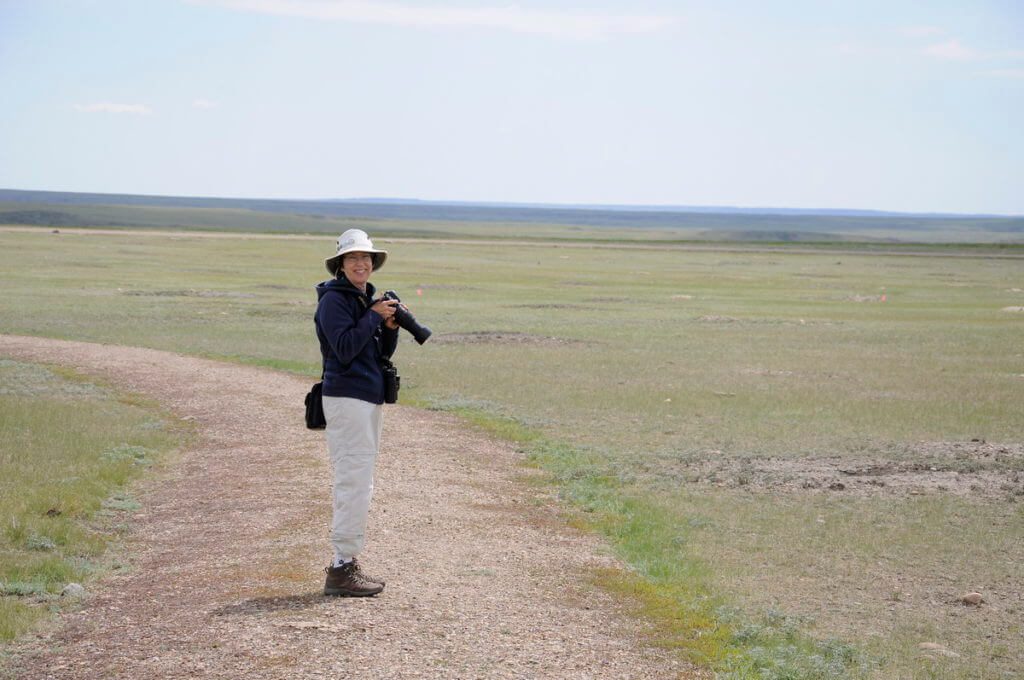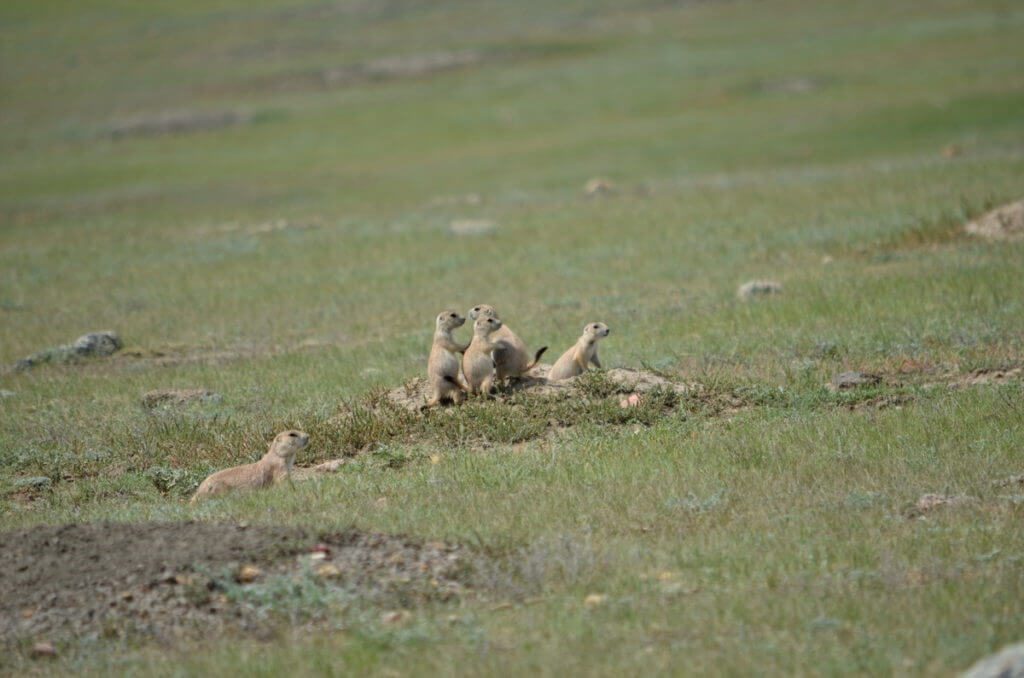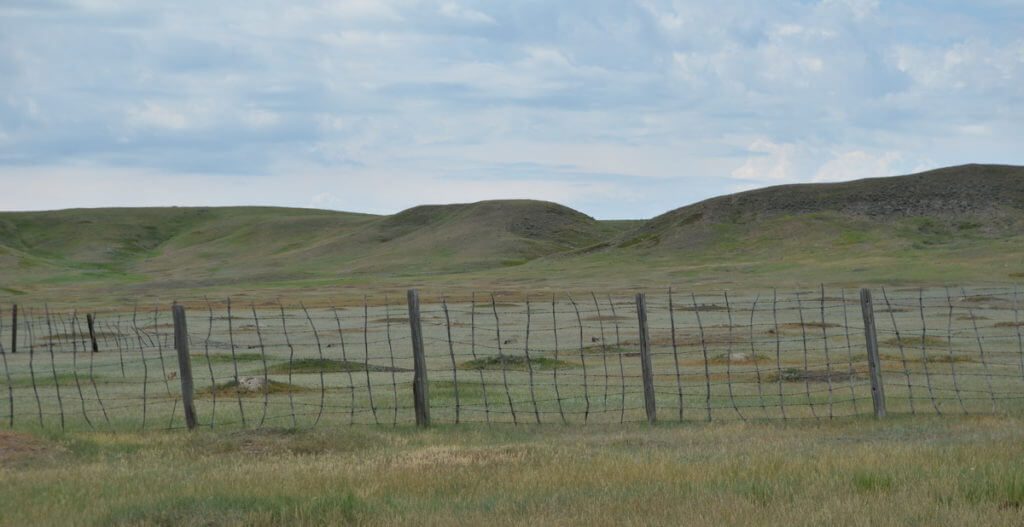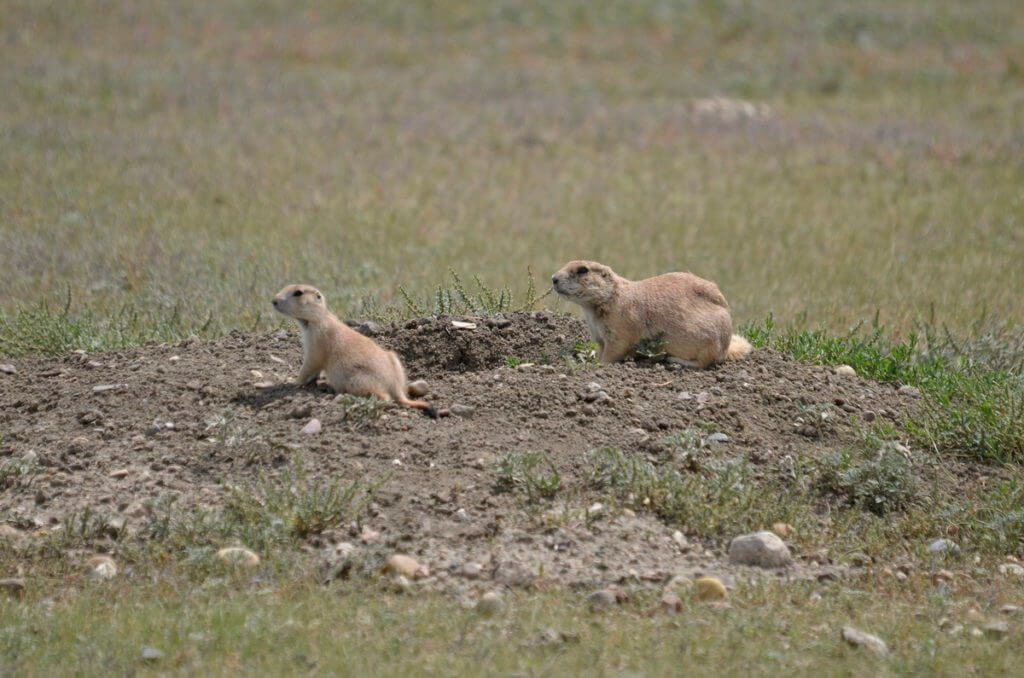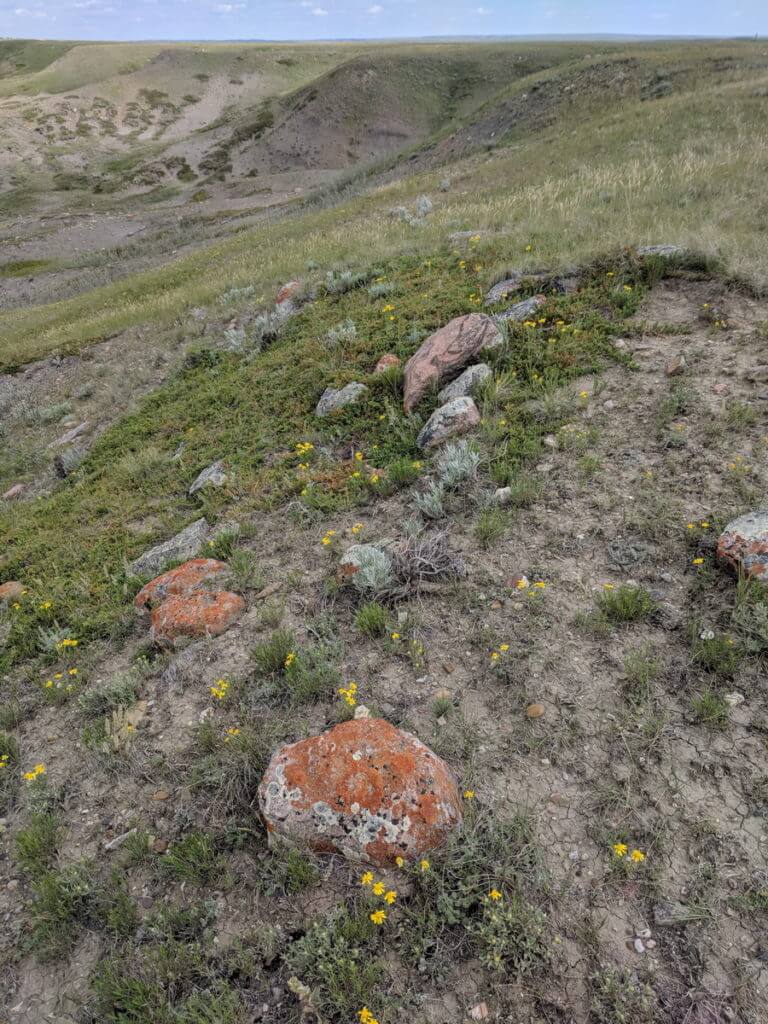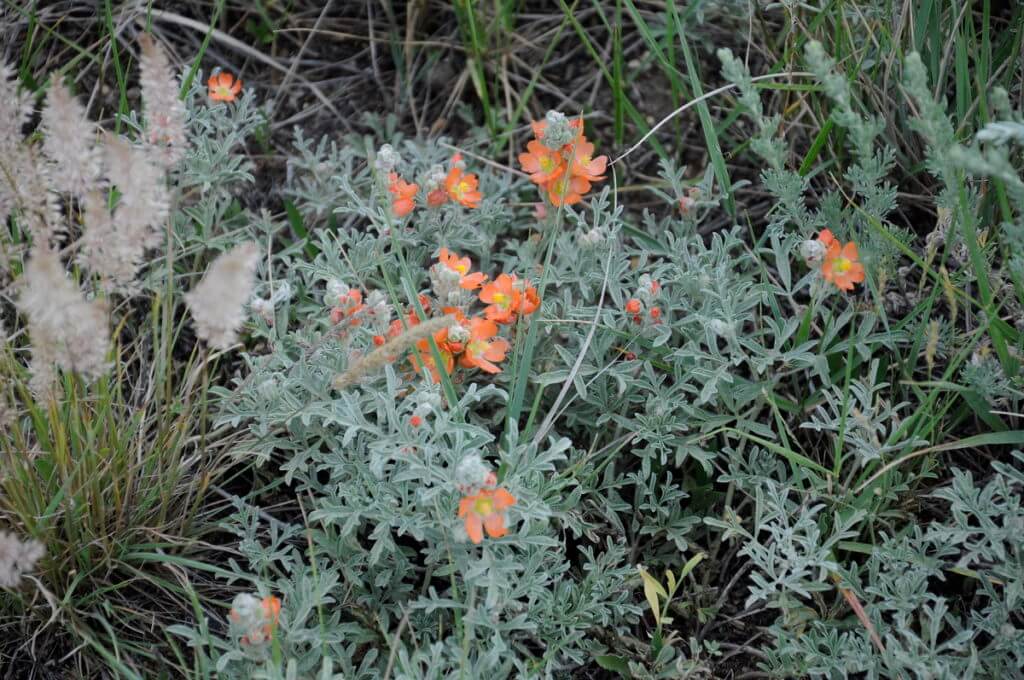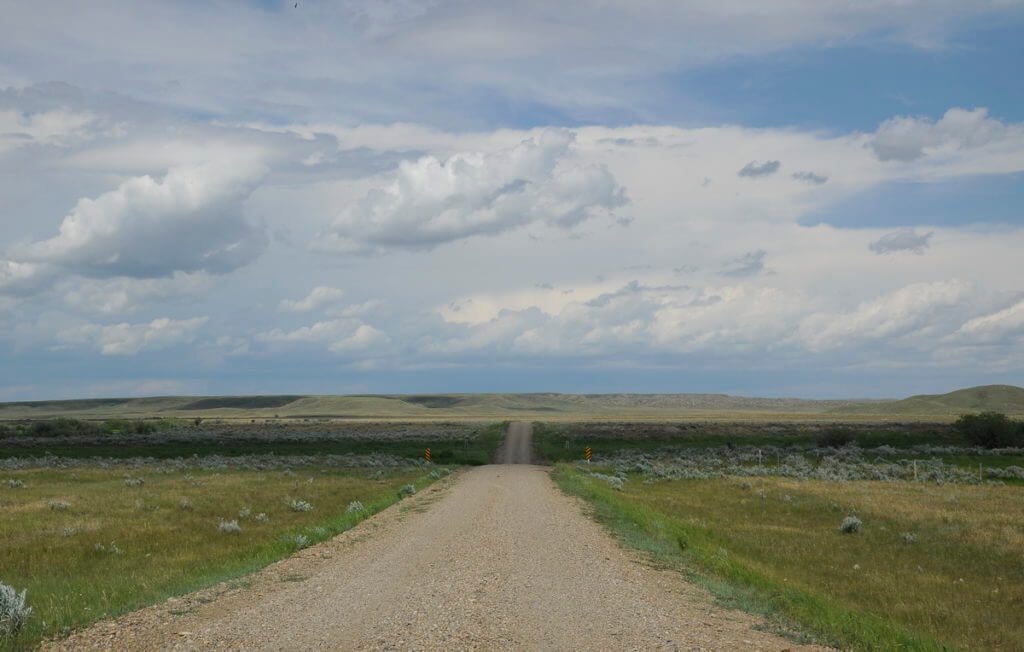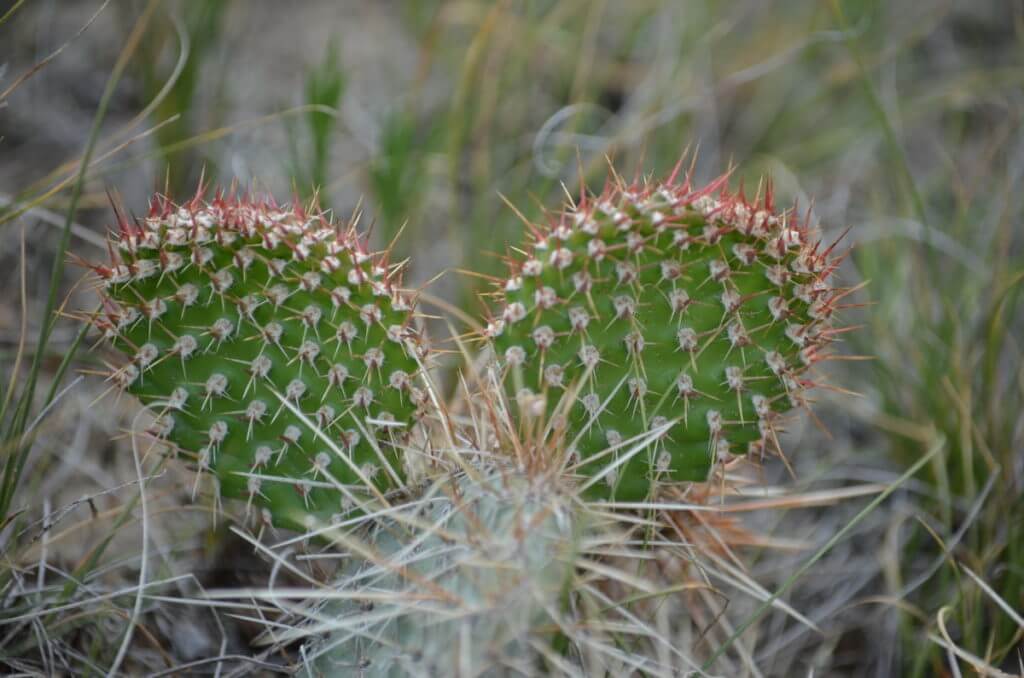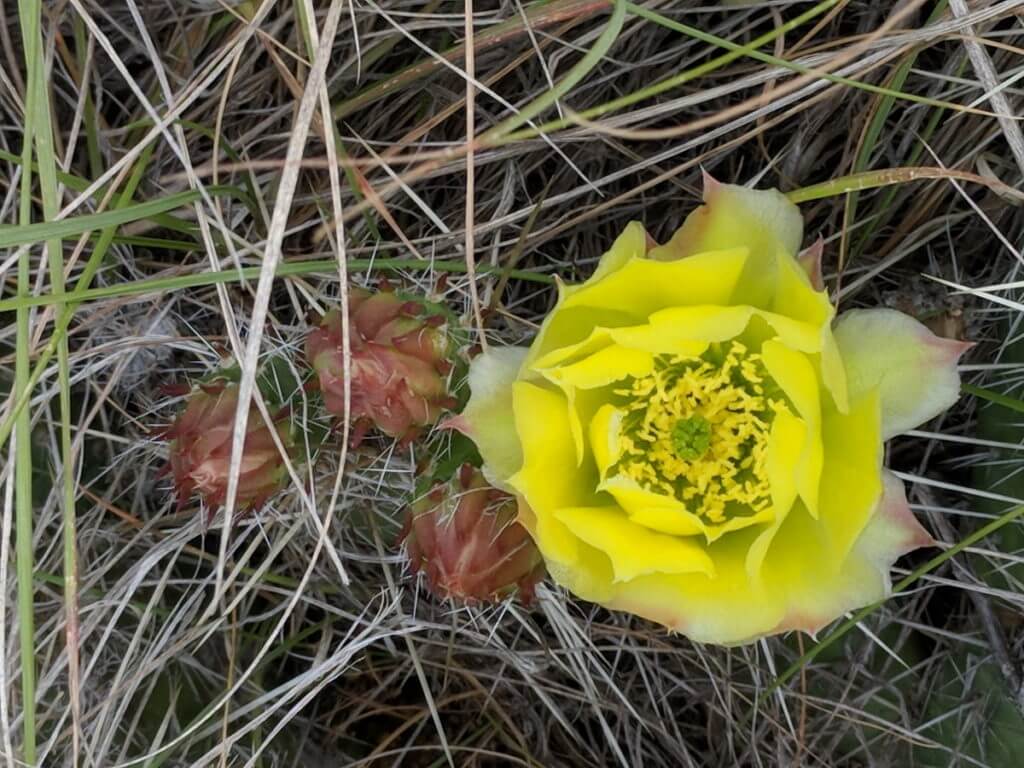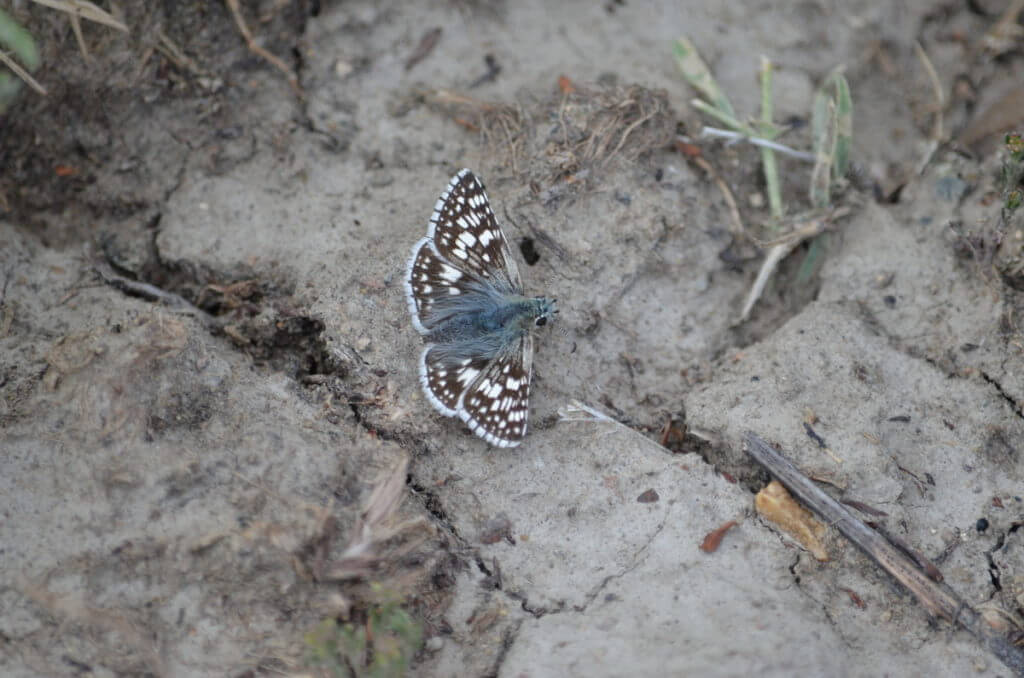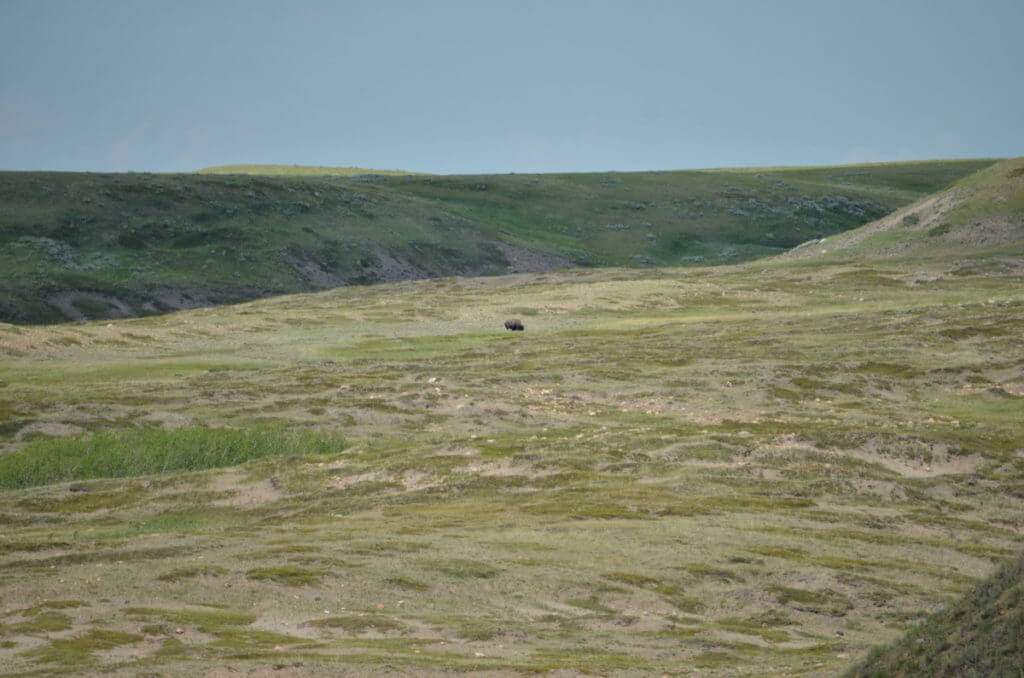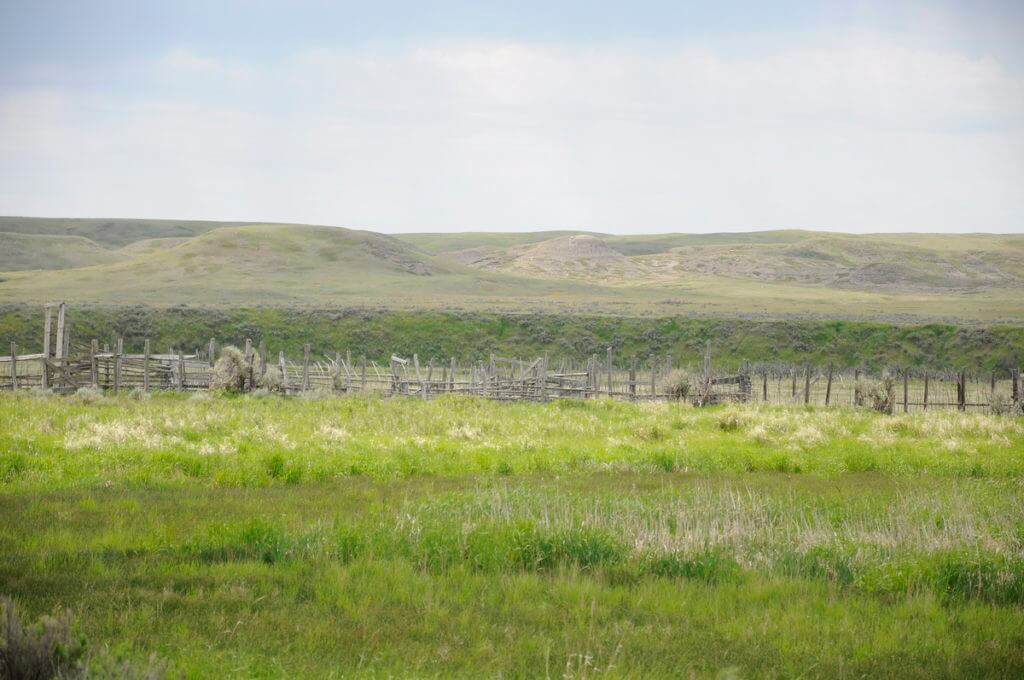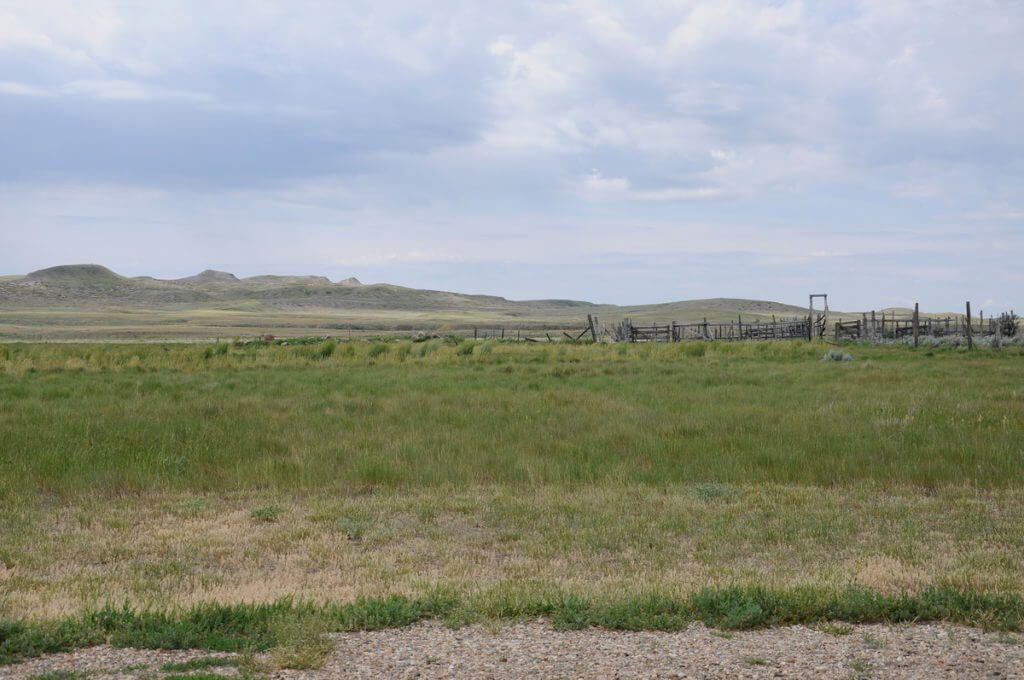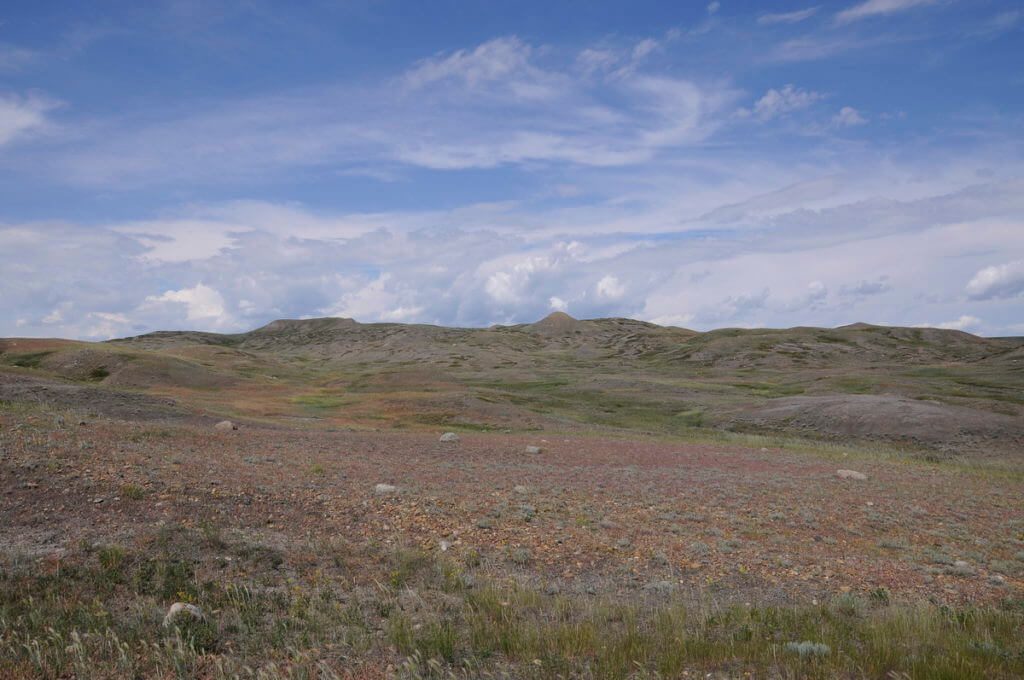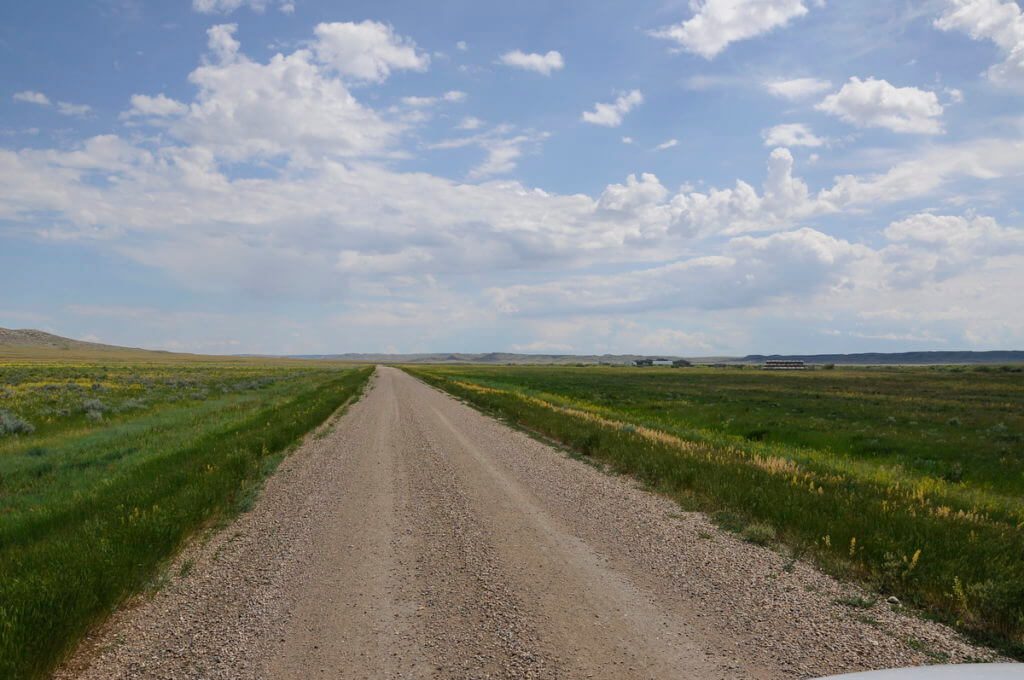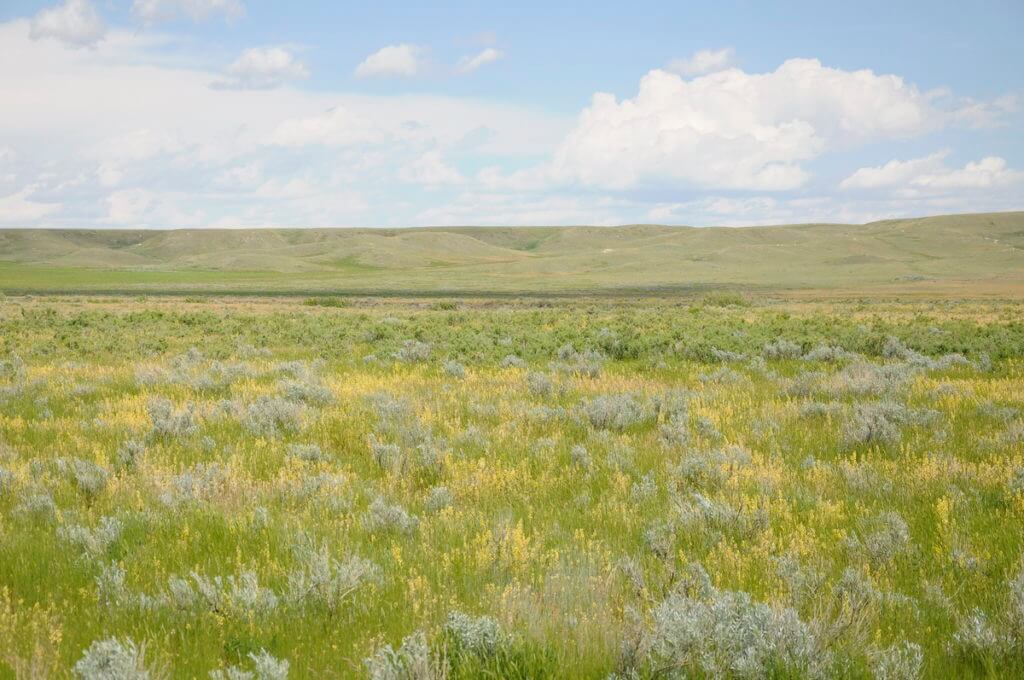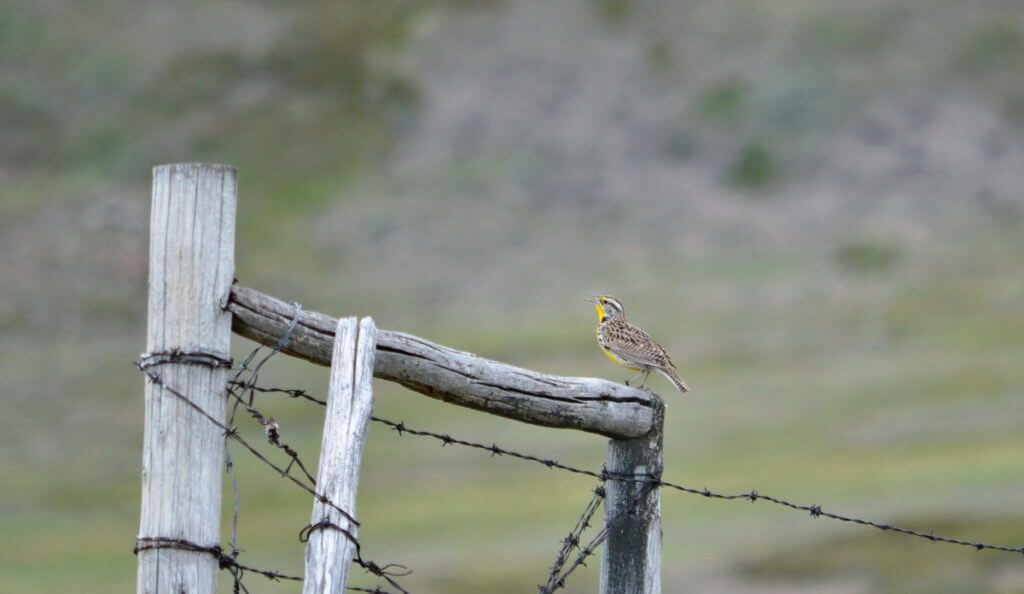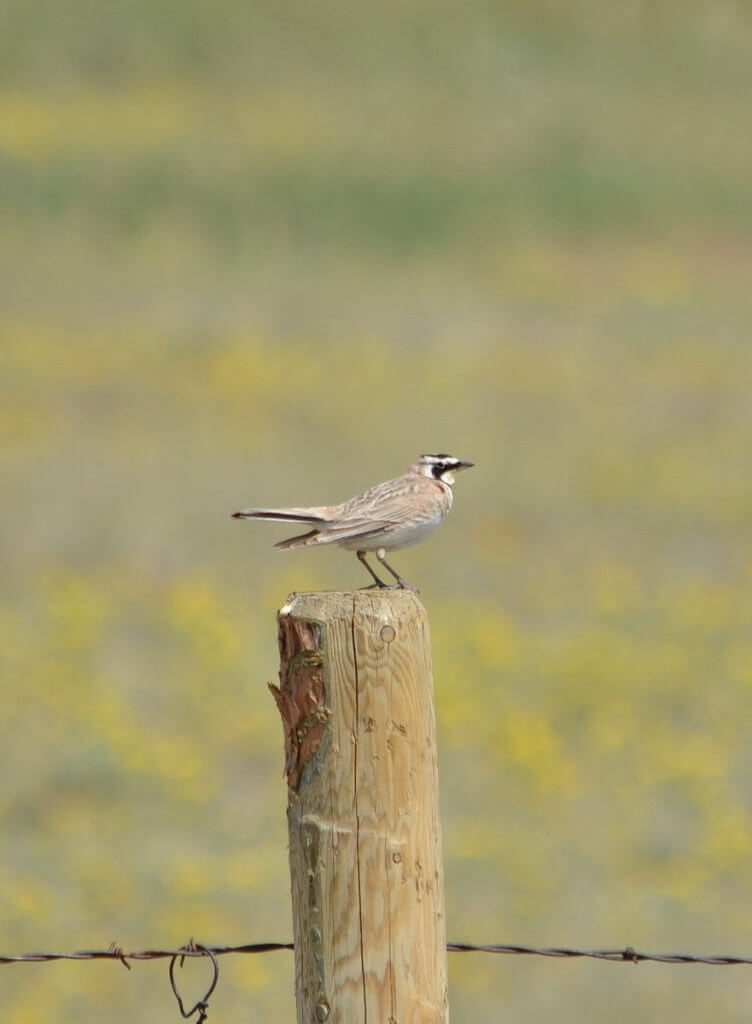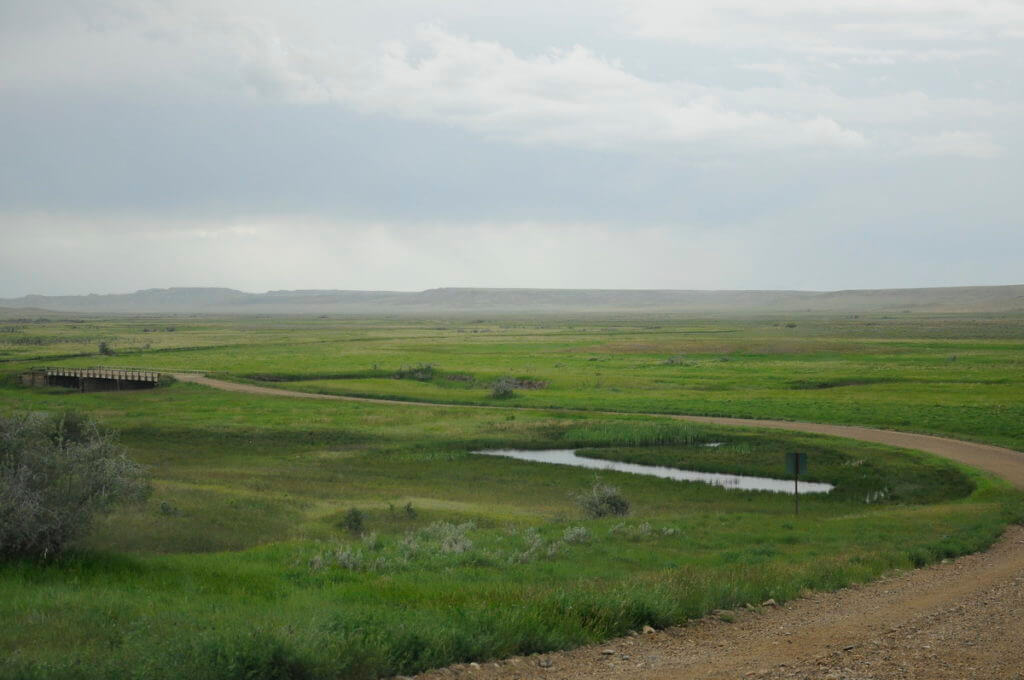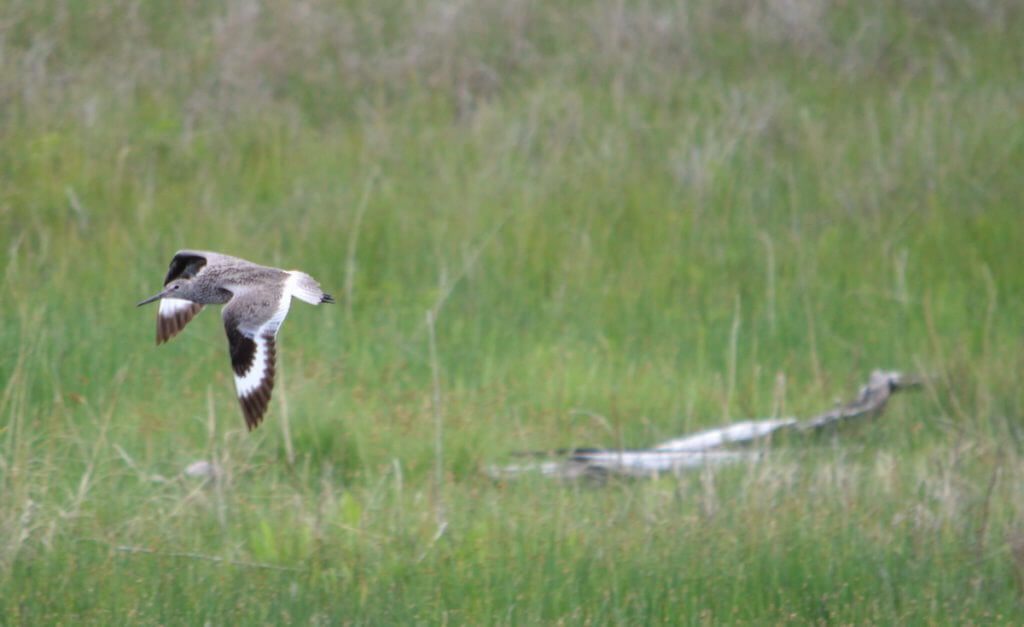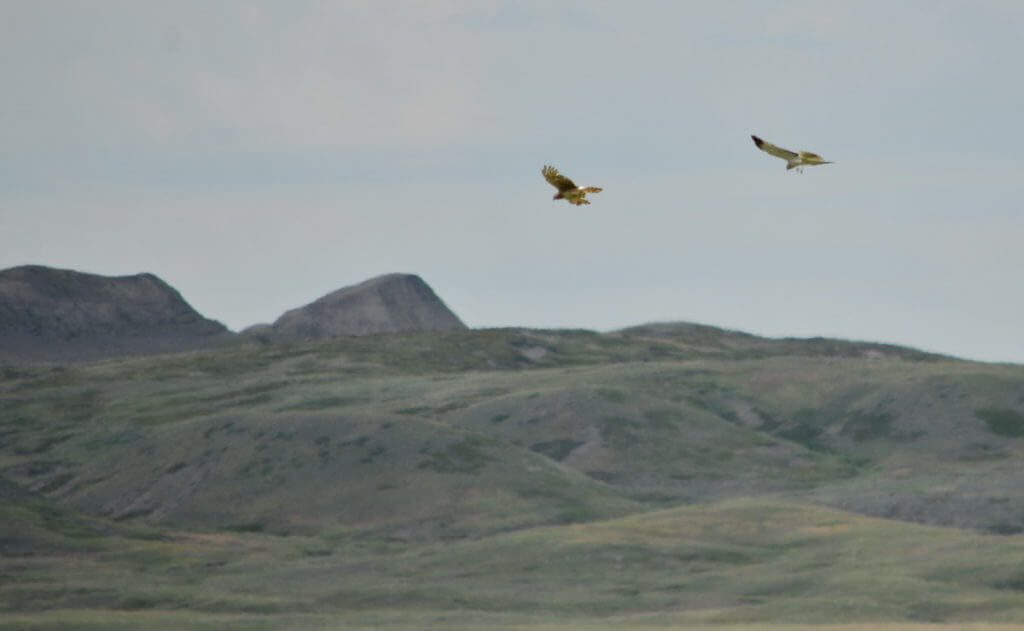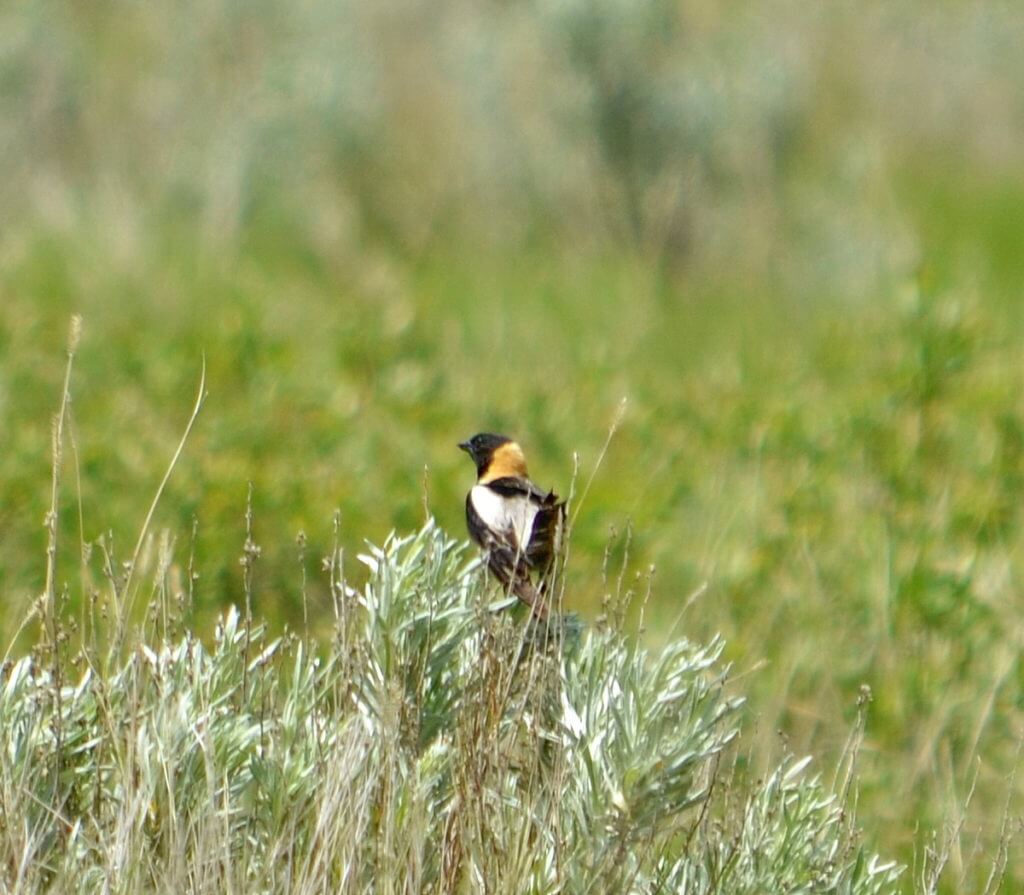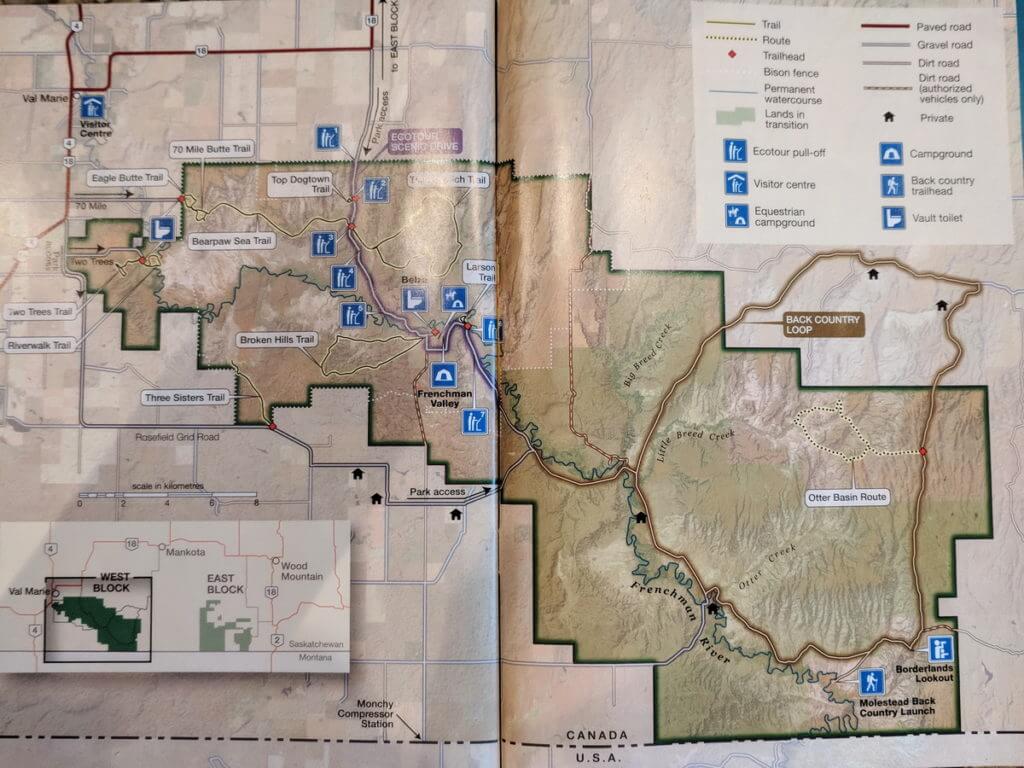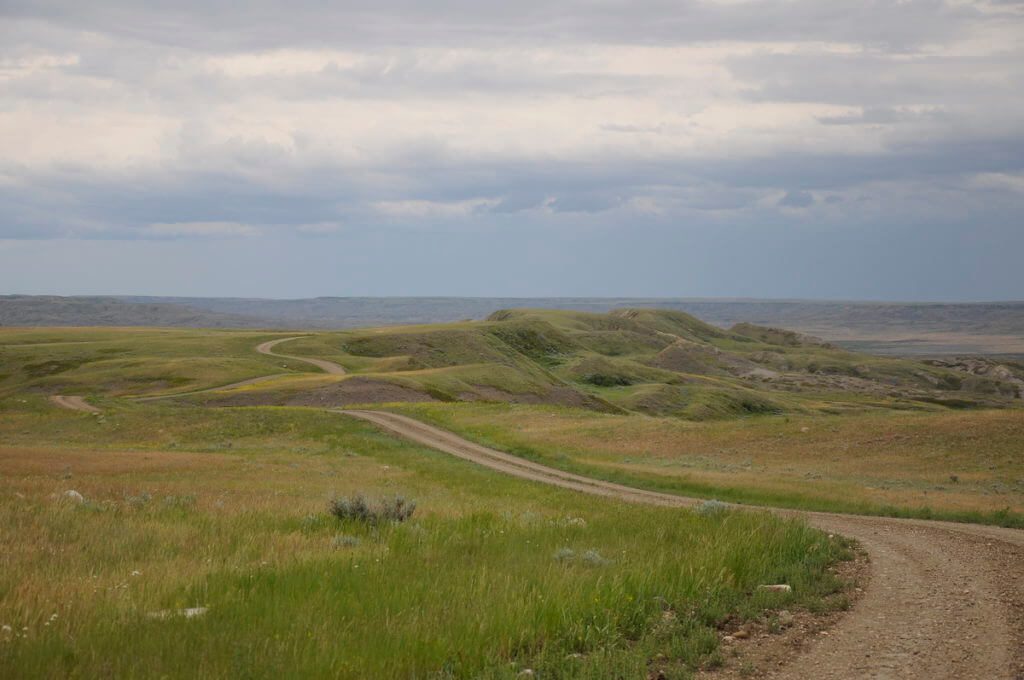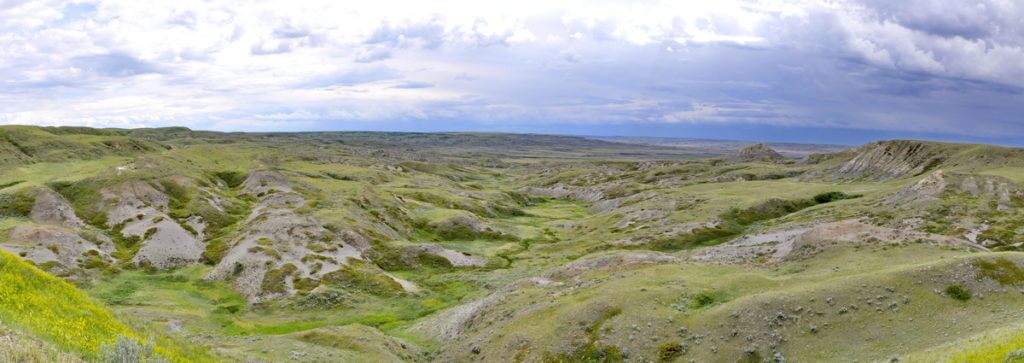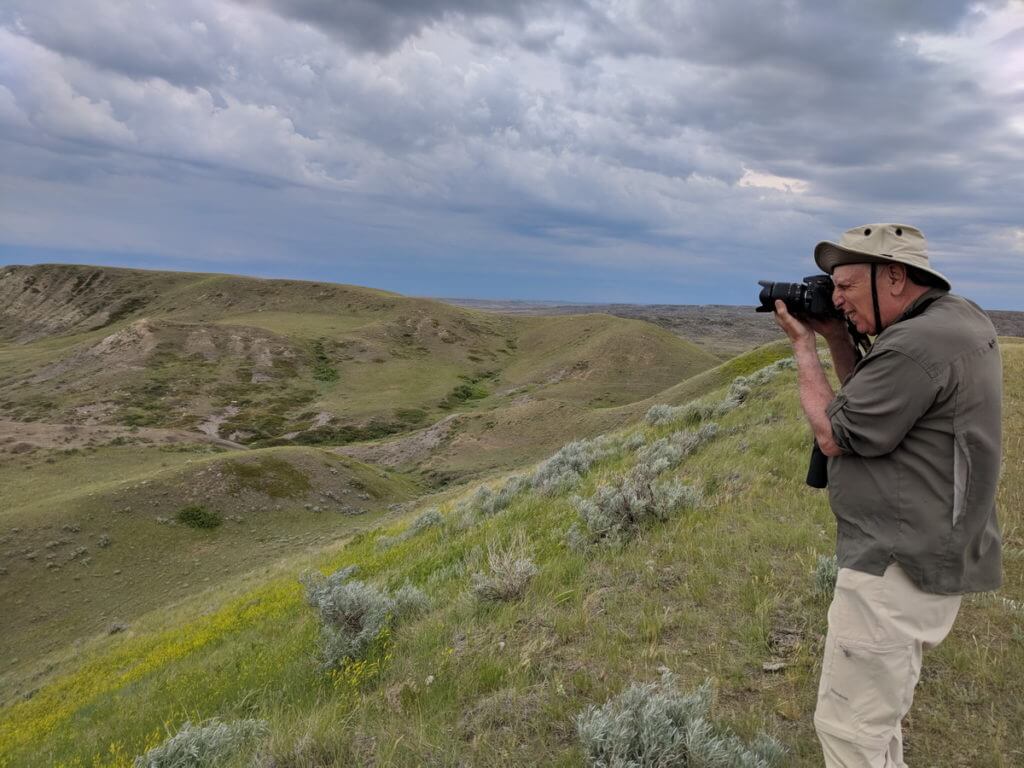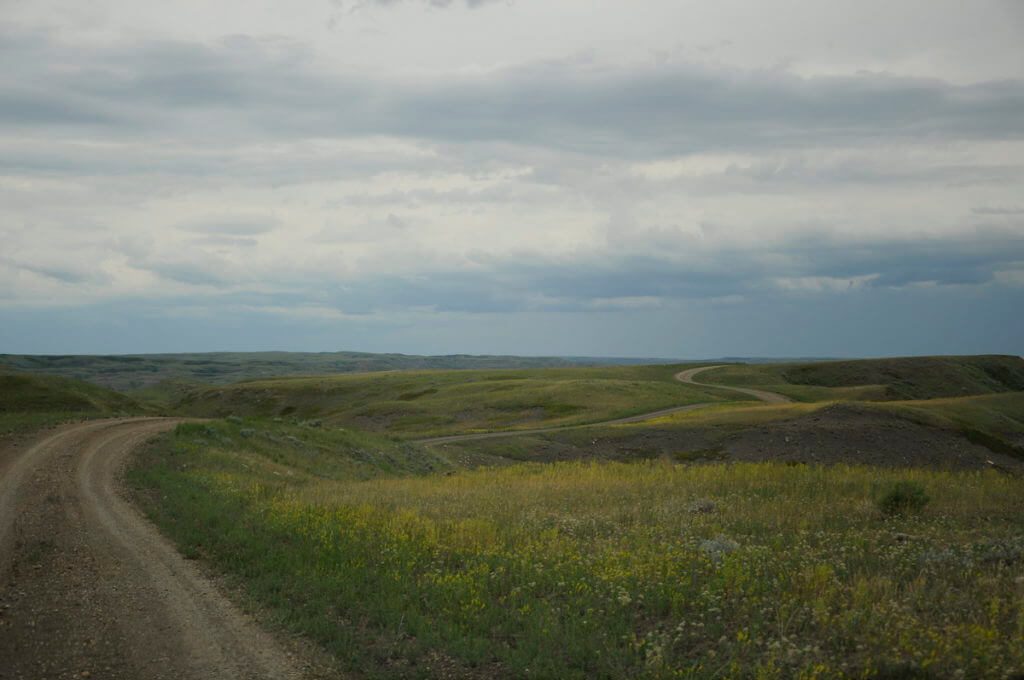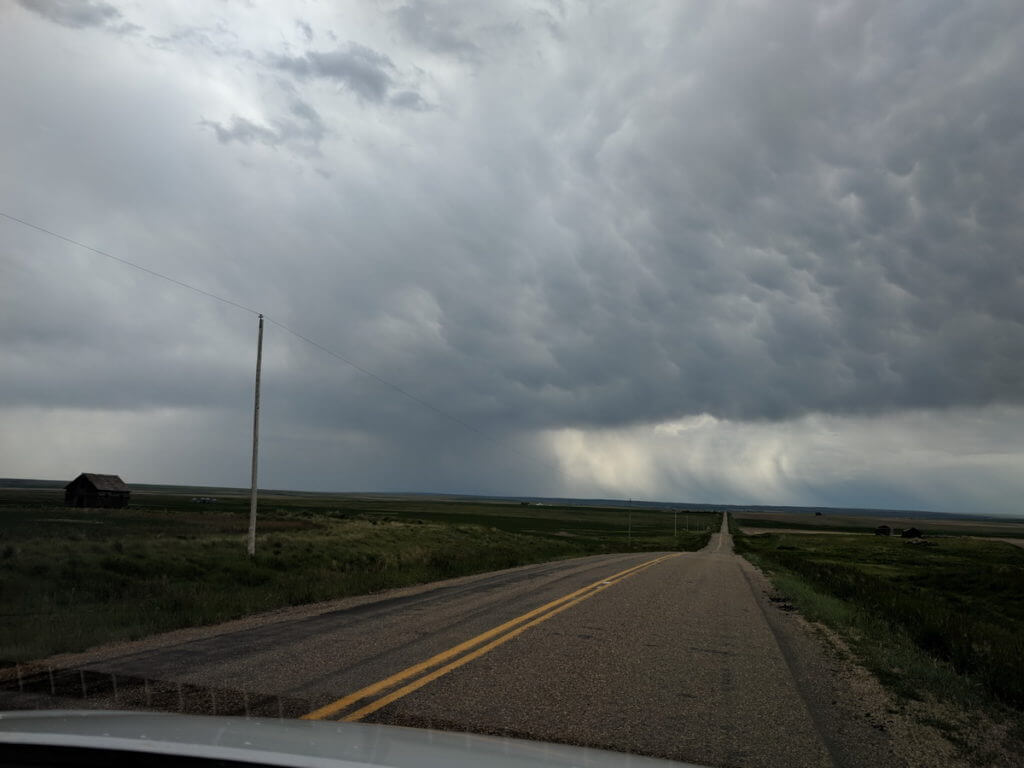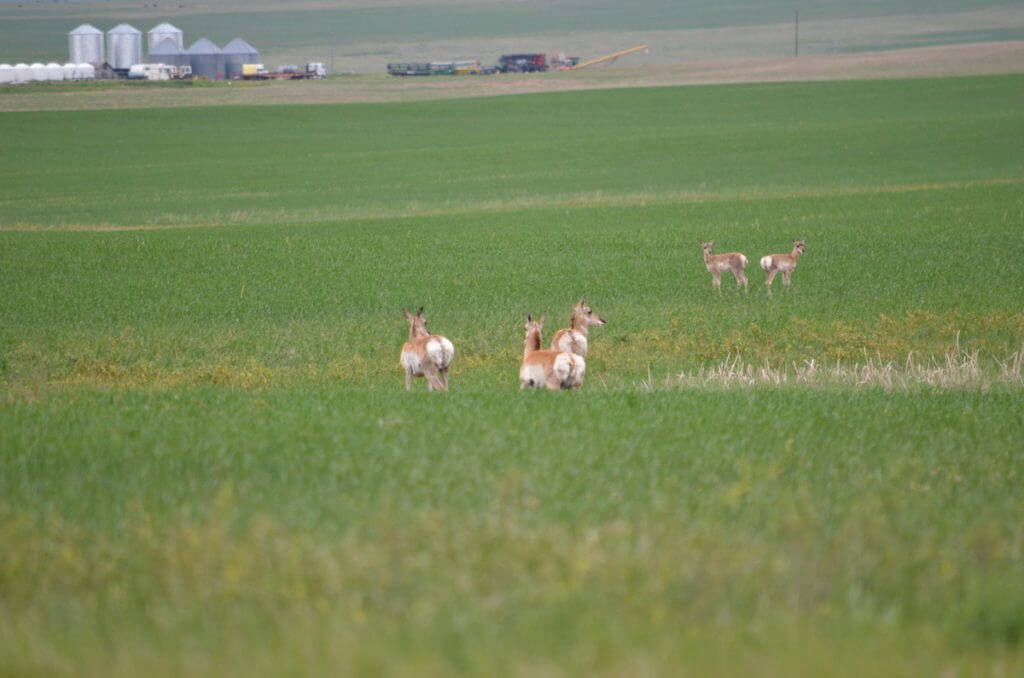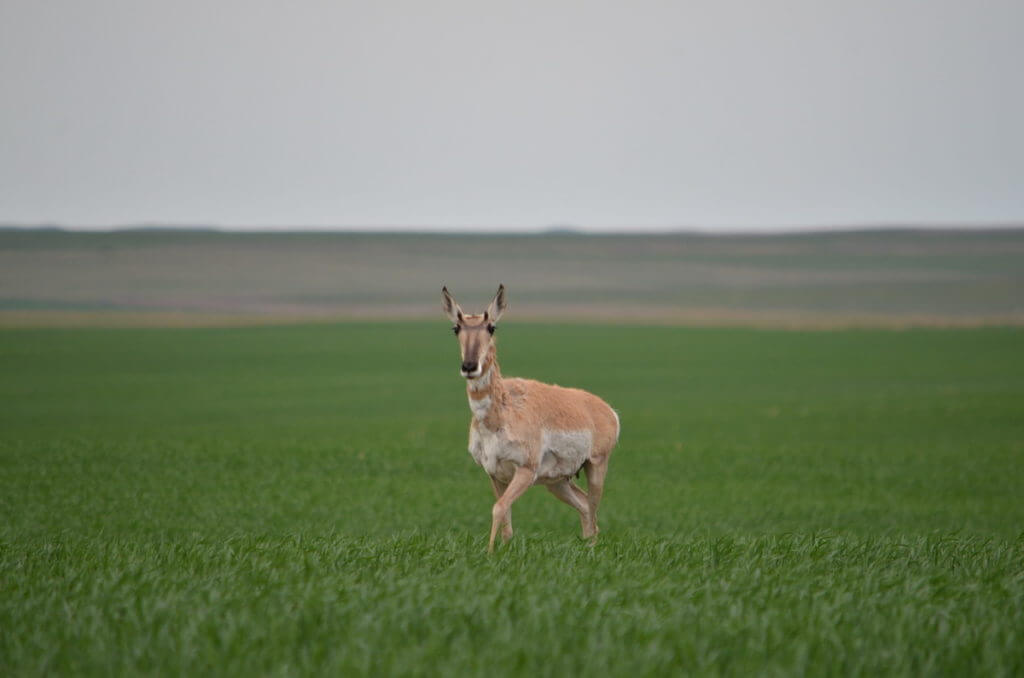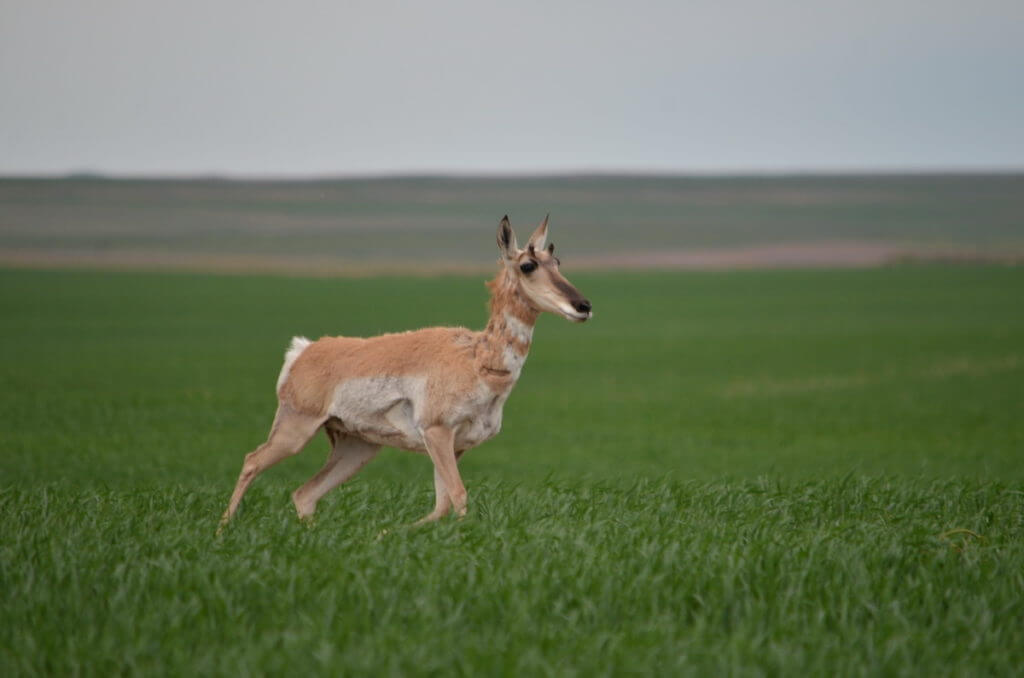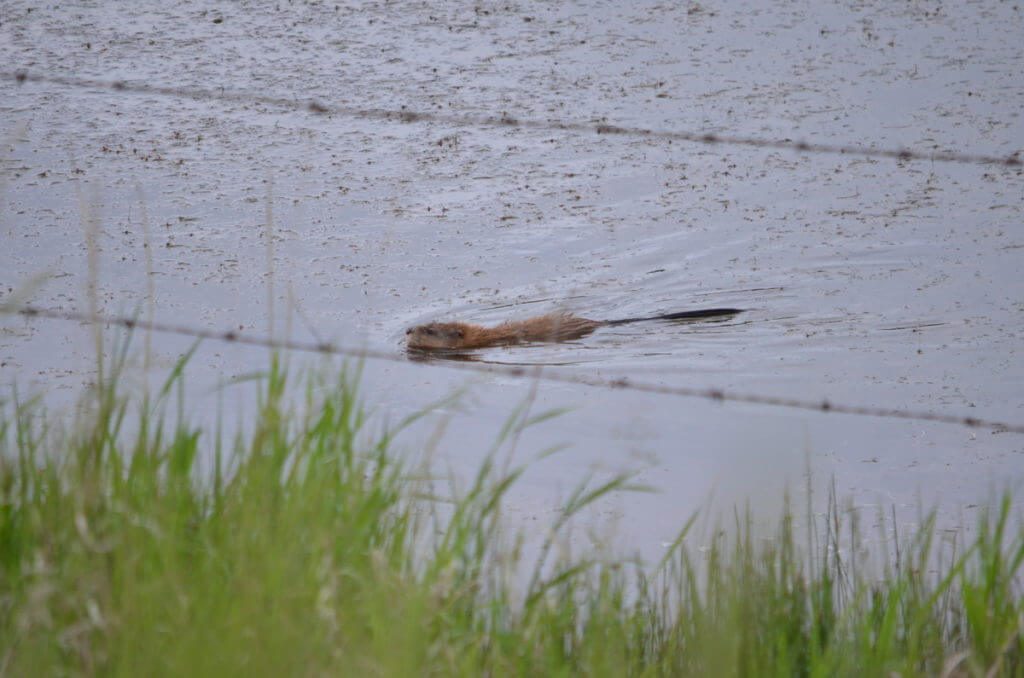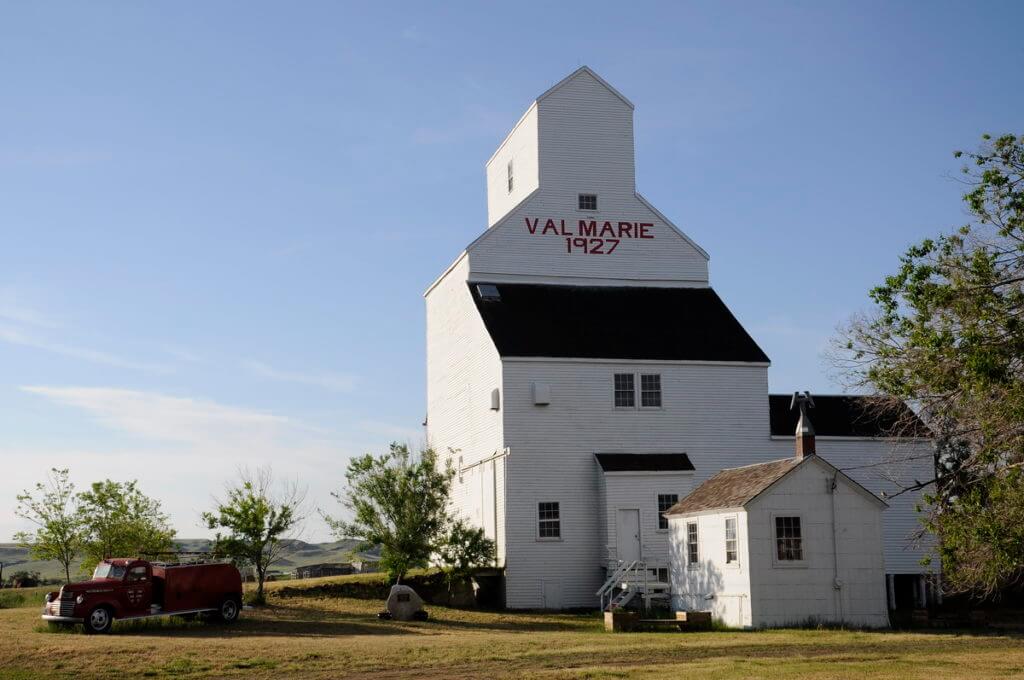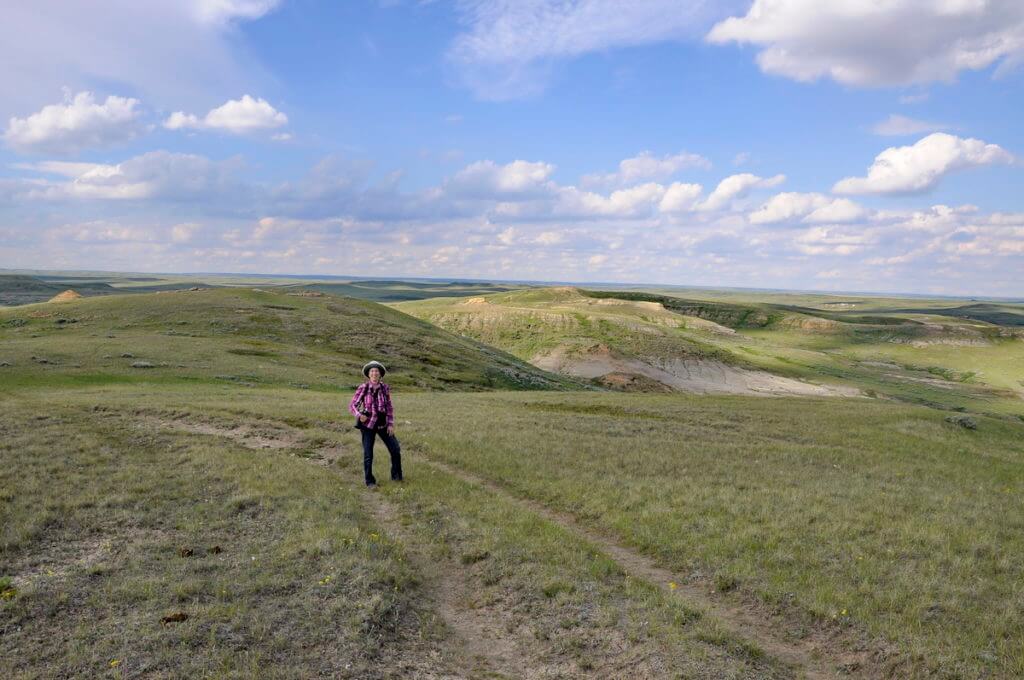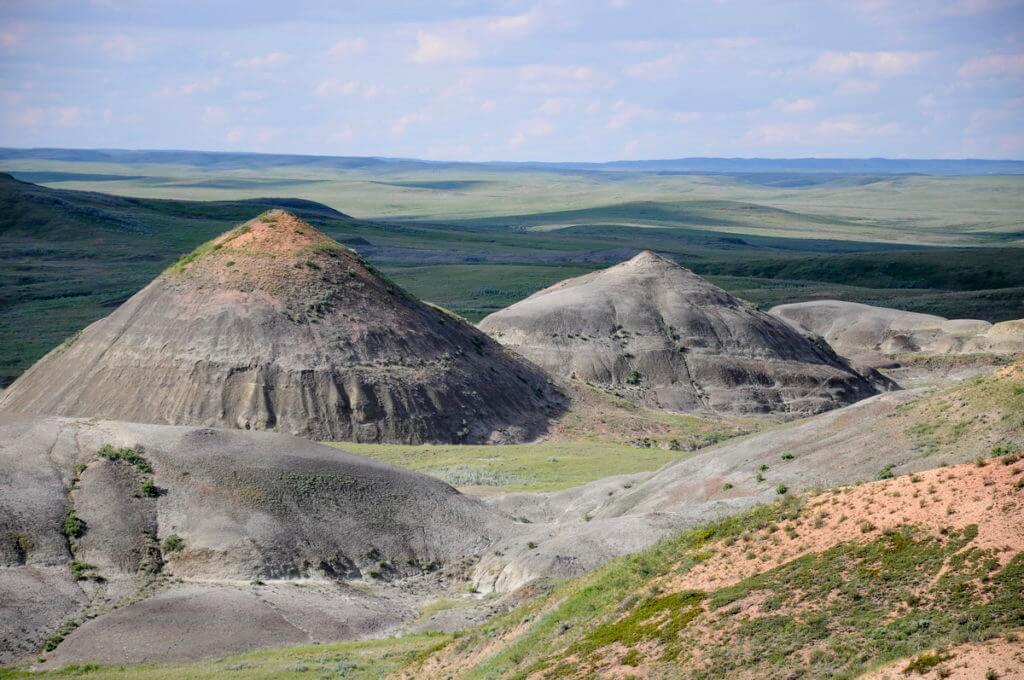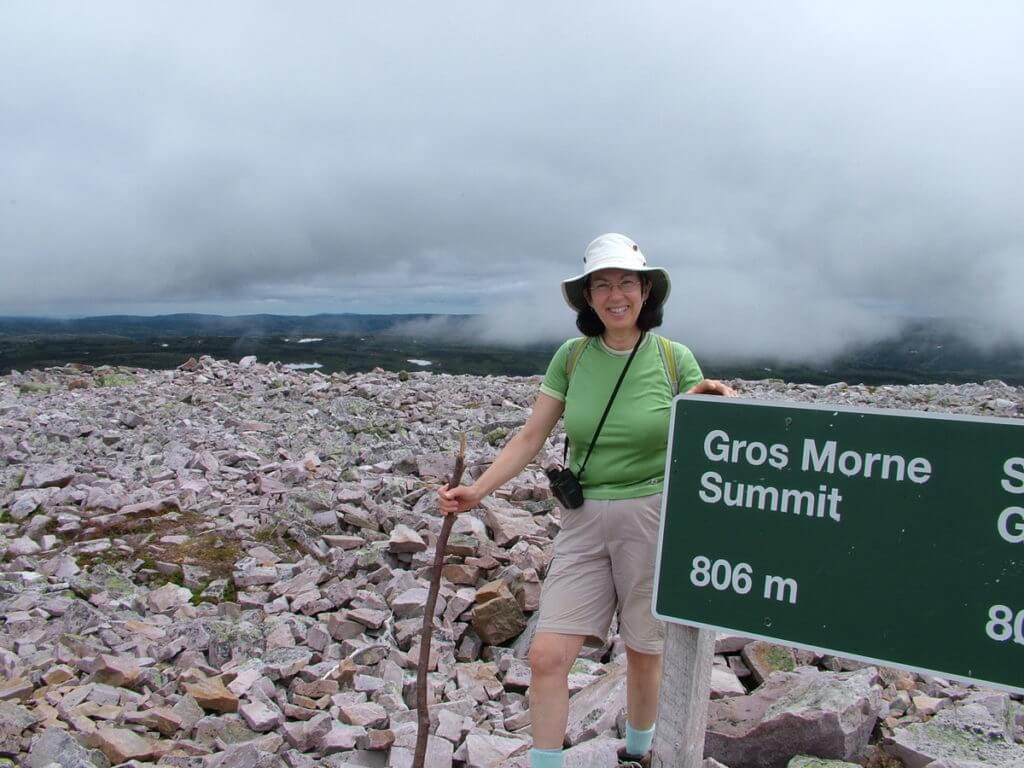Driving The Ecotour Road In Grasslands National Park
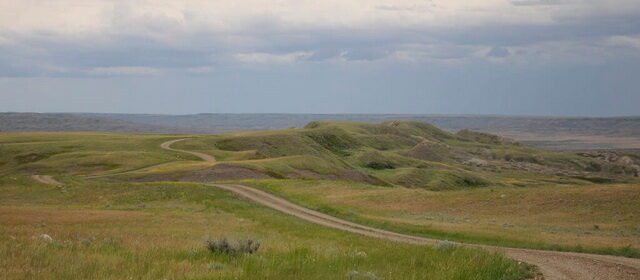
On our first full day at Grasslands National Park, after waking up very early and having a hearty breakfast, we took the advice of our hostess and set out to drive the Ecotour Road to the Borderlands Lookout. It was a relaxing way to start our explorations on the heels of a very long travel day.
Entering Grasslands National Park from the north, we reached the trailhead for Top Dogtown Trail in no time. Deemed the top of the world for Prairie Dogs, it is the northernmost colony of Black-tailed Prairie Dogs in North America.
The West Block of Grasslands National Park and neighbouring lands are the only places in Canada where Black-tailed Prairie Dogs exist in their natural habitat.
During the course of the day, Bob and I also made stops at a few other Prairie Dog colonies. At each one, a vast array of mounds could be seen stretching into the distance. As at Top Dogtown, it is the collection of mounds that constitutes each location’s Prairie Dogtown.
It was so much fun observing the little rodents, many of which were atop the mounds that mark the entrances to their homes. Without fail, the sentinels would sound off a warning whistle to alert all prairie dogs to we intruders.
The Top Dogtown Trail is a short .74 kilometre trail that meanders through the Prairie Dog colony to the brink of Laouenen Coulee.
As we navigated the short trail overlooking the Coulee, we took note of the shrubby, textured landscape.
The succulent vegetation that ekes out an existence provides food for a variety of animals.
It is the grasses and forbs, such as this Scarlet Globemallow, that the Prairie Dogs eat.
The landscape in Grasslands National Park is quite remarkable. Being our first time in the Park, we were filled with anticipation as to what we would discover next.
The second viewpoint where we pulled over for a look was at the Larson Interpretive Trail. Bob and I kept a keen eye out for Rattlesnakes but instead found Prairie Prickly Pear Cacti dotting the landscape.
The sumptuous flowers of the Prickly Pear Cacti really brightened the arid surroundings.
Also giving us quite a thrill was a Common Checkered-Skipper, a beautiful butterfly that we had never seen before.
Bob and I meandered along the trail and found a beautiful view of a canyon surrounded by rolling and worn mesas. On a distant hill, a lone Plains Bison was grazing.
As we continued our drive on the Ecotour route, the signature remains of many homesteaders that once tried to eke out a living on the Prairies can still be seen.
In the late 1880s, cattle replaced bison as the basis for a different way of life, and they were allowed to graze freely on the range. Harsh winters resulted in a massive die-off of cattle, and by the early 1900s, ranchers were obligated to fence in their cattle.
Government incentives encouraged homesteaders to “tame the west”, but poor soils, challenging topography and an arid climate had many homesteaders picking up and leaving en masse.
Besides several abandoned corrals and a couple of dilapidated farms, we did see evidence of fully operational ranches surrounded by hectares of wild prairie grassland. The successful ranchers and homesteaders combined ranching and farming in order to make a go of it, and they formed the basis of the prairie communities.
Protecting the Prairie Grasslands Natural Region, Grasslands Park encompasses one of the finest intact parcels of North American mixed-grass prairie habitat in existence.
Centuries of grazing, fire and climate have shaped the Prairies into a mosaic of vegetation that provides the necessities for grassland birds and animals.
Bob and I were on the lookout for birds and animals as we navigated the Ecotour Route. Western Meadowlarks could be seen and heard frequently.
Western Meadowlarks are quite similar to the Eastern Meadowlarks that we see in Ontario. Seeing the Western variety made a nice addition to our Life list.
With Prairies providing such a unique habitat, Bob and I found ourselves making frequent stops to photograph birds native to the grasslands such as this Horned Lark.
Here, the “horns” of the Horned lark are nicely visible.
The Ecotour route followed Frenchman River for a good distance through a lush, riparian habitat that we did not expect.
That is where we found a Willet,
and a pair of Northern Harriers.
In Ontario, we seldom see Bobolinks so it was especially exciting to find a few of these melodious birds in this one spot, as well.
At 2 p.m., we pulled over at a Y in the road for a tailgate picnic before detouring off the Ecotour Route onto the Back Country Loop. A chance meeting with a Park employee, Dwayne, gave us insight into the conditions that might ensue should the gathering storm hit the area.
The hilly landscape as we drove the Back Country Loop toward Borderlands Lookout was very alluring.
The Borderlands Lookout in Grasslands National Park is located about 1/3 of the way around the Back Country Loop. Two red chairs have been placed on a promontory by National Parks of Canada for a prime view.
Overlooking the mesas and coulees, it is possible on a clear day to see the border of the State of Montana in the United States.
Heeding Dwayne’s advice, we only spent about 20 minutes at Borderlands Lookout before continuing the very long circuit around the back of the plateau.
We were keeping an eye on the storm clouds because in the back country, heavy rains can result in flooding. The coulees channel runoff down through gullies and overtake the road very quickly. Routine patrols keep tabs on visitors since there is no cellphone reception, no buildings, and no services!
If we were caught in the Back Country during a sudden storm, Dwayne said that we would find ourselves trapped with no way out. Finally the decision was made to turn around and retrace the route back to the Park’s entrance.
As we navigated the Ecotour Route once again, looming storm clouds and heavy rain in the distance had us thankful that we had made the right decision.
At 5:30 p.m., we exited the Park where we had entered. Bob and I thanked our lucky stars when we saw a group of Pronghorn Antelopes cross the highway ahead of us.
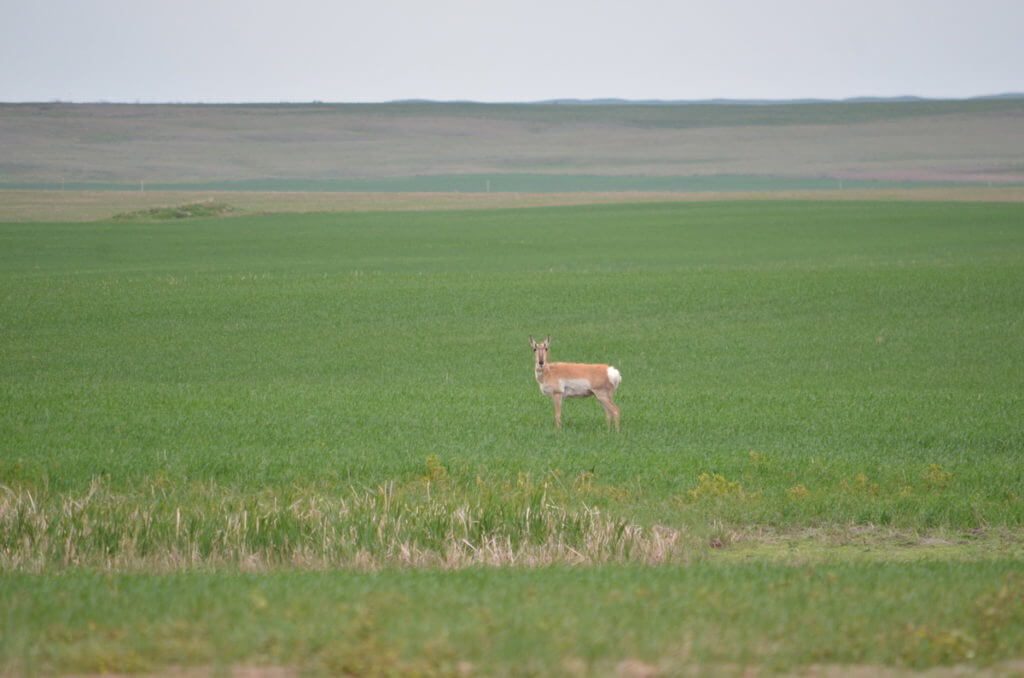 All of the Antelopes proceeded across a field except for one left behind to keep an eye on us.
All of the Antelopes proceeded across a field except for one left behind to keep an eye on us.
We were a bit unnerved because this particular Pronghorn Antelope approached directly towards our car and really stared us down before changing course.
We remained in the car, and the next thing you know, the Antelope walked across the road behind our vehicle to a field on the other side of the highway.
A short drive took us back to Val Marie where we were staying for a couple of days but not before spotting a Muskrat in a roadside stream.
In the end, we saw little rain, but the back country had been hammered. Dwayne was concerned for our welfare thinking we might have continued to the back half of the plateau, so he alerted both the Park Office and the hostess at our accommodation seeking reassurance that we made it back to Val Marie. All hands greeted us at the local restaurant and were relieved to see us there having dinner, safe and sound.
You May Also Like:
A Day of Adventure – Toronto to Grasslands National Park, Saskatchewan
Hiking the Valley of 1000 Devils Route, Grasslands National Park East Block
Our hike up to the Gros Morne Summit in Newfoundland
Resplendent Quetzals prepare their nest in Monteverde Cloud Forest

